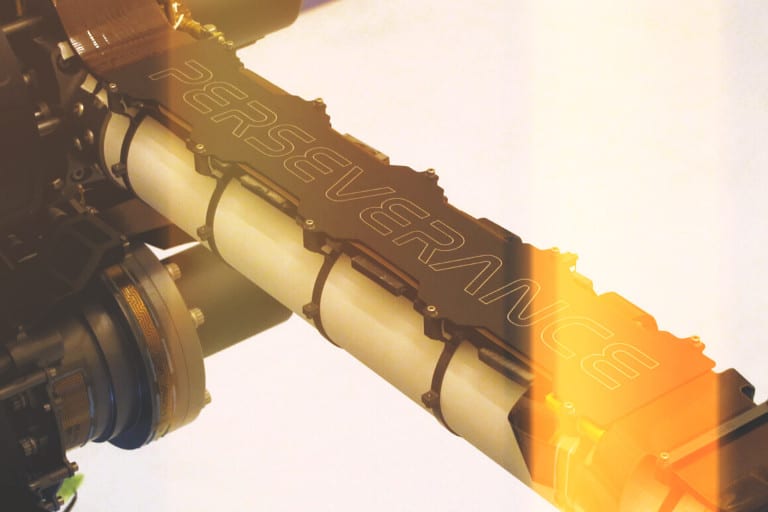Mars 2020 & Motiv – The Advanced Robotics Of Perseverance
Our four-part blog series on the history of space robotics continues with a look at the arm of Perseverance. Motiv’s previous engineering innovations with robotics led to the development of their contribution to the Mars 2020 mission.
Motiv’s forward-thinking work in space-based motion control has attracted wider attention from the space exploration community. In 2015, Motiv was contracted by NASA’s Jet Propulsion Laboratory (JPL) to design and build a robotic arm for use on the Mars 2020 Perseverance rover.
The challenge Motiv faced was to develop an arm with greater payload capacity and positional precision than required for previous rover missions. Motiv’s team of engineers used their collective expertise – and backgrounds in robotics – to create an arm suitable for the most advanced rover mission to Mars ever launched.
Perseverance landed on Mars, in Jezero Crater, on February 18th, 2021, after completing its long journey – nearly 300 million miles – from Earth. The rover is now exploring, analyzing, and documenting the terrain of Jezero – the presumed site of an ancient lake and river delta. Perseverance is gathering evidence of geologic and atmospheric conditions that once supported the existence of surface water on Mars.
Strengths Of The Robotic Arm
NASA wanted an arm capable of drilling into Martian rock and soil, to collect samples for analysis. Motiv was tasked with creating an arm equipped with the kind of heavy-duty hardware to make such drilling possible, while being lightweight enough for the rover to remain mobile. To enable the coring system to penetrate targeted surface areas, Motiv gave the arm a sense of touch, in the form of a force-torque sensor.
Using weight-on-bit information, the force-torque sensor tells the coring system how much drilling force to apply – and in which direction – during sampling operations. The sensor also acts as a safety mechanism, in case the rover slips while the rotary percussive drill is in use.
After drilling, the coring system sends the collected rock and soil samples to the rover’s internal encapsulation system. Part of the rover’s mission is to deposit these samples at a designated site – for retrieval on a future mission.
The Arm’s Other Capabilities
Five points of articulation provide a full range of motion for the seven-foot robotic arm attached to Perseverance. Along with the coring system, the arm’s turret is equipped with cameras, a ground contact sensor, and a dust removal tool.
For closer analysis of the Martian surface, the arm uses SHERLOC and WATSON, instruments designed to detect and document the presence of minerals and organic materials. WATSON captures magnified images of rock and soil samples for SHERLOC to inspect and analyze. WATSON also records images of the rover’s wheels and undercarriage, so that scientists on Earth can spot any potential mobility/operation issues for Perseverance.
Capability Through Ingenuity
Without its robotic arm, Perseverance would not have the same tactile access to its surroundings, nor the capability for such precise examination of Martian terrain. Motiv’s team of engineers delivered technology that gives scientists unprecedented access to the surface of Mars.
The Mastcam-Z cameras mounted to Perseverance were also developed by Motiv. Designed to capture zoomable stereoscopic images – and video – at a range of focal lengths, the advanced imaging technology of Mastcam-Z provides spectacular views of the Martian landscape.
Motiv’s Mission & Challenges
To make the arm’s instruments – not to mention the arm itself, along with Mastcam-Z – functional in an extreme environment like the surface of Mars, Motiv conducted months of rigorous testing and development, to ensure system resilience. Only so much troubleshooting can be managed from mission control on Earth –millions of miles away. Through an intensive engineering process, and after a series of simulations, Motiv completed and delivered the arm to JPL – for subsequent delivery to Mars, mounted to Perseverance.
